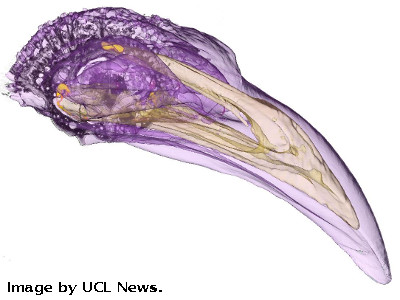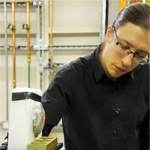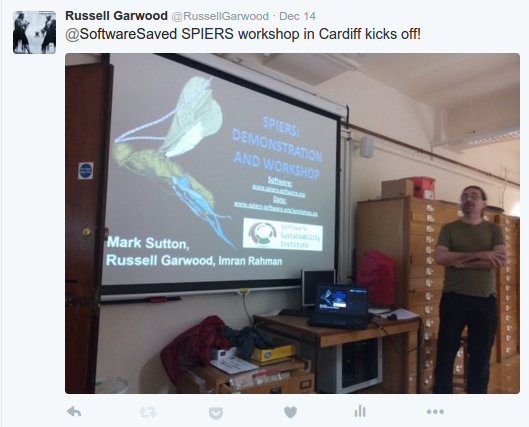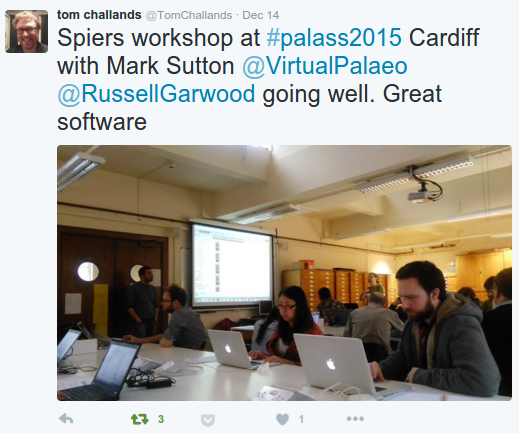Open source tomography training for Palaeontologists, Cardiff 2015
Posted on 9 June 2016
Open source tomography training for Palaeontologists, Cardiff 2015
 By Russell Garwood, Lecturer at the University of Manchester and Software Sustainability Institute Fellow.
By Russell Garwood, Lecturer at the University of Manchester and Software Sustainability Institute Fellow.
The Software Sustainability Institute sponsored a training course introducing the tomographic software suite SPIERS in Cardiff at the 2015 Annual Meeting of the Palaeontological Association. Organised by Institute fellow Russell Garwood, and colleagues Mark Sutton and Imran Rahman, by the end of the morning session palaeontologists were studying wasps in amber in 3D.
As outlined in a previous blog post, computerised tomography (CT) scanning is an increasingly common approach in many different fields for characterising objects in three dimensions. Scanners are cheap and accessible, but the software used to create digital visualisation can be very expensive. Freely available software for this does exist, and accessible training in these programs can stop software prices becoming a barrier to widespread adoption of micro-CT, especially where funding is limited. To this end, Institute fellow, Russell Garwood and colleagues Mark Sutton (Imperial College, London) and Imran Rahman (University of Bristol) offered a training session funded by the Software Sustainability Institute at the start of Annual Meeting of the Palaeontological Association on 4 – 17th September 2015, in Cardiff.
SPIERS, the software introduced in the course, is both free and coded for operability on low-powered PCs. The training took place on a very rainy Monday, with 25 palaeontologists attending from as far afield as Brazil, Germany, and Sweden.
After an introduction to the software, its ethos, and its history from Mark Sutton, the attendees got to play with small 3D datasets on their own machines. They learned to modify image stacks with the program; then threshold these to create three-dimensional, isosurface-based models. Over the course of the session, they learned how to manipulate and filter models in 3D, and to create regions of interest within the datasets, allowing different elements of a fossil’s anatomy to be rendered separately. The course went on to cover how to create threshold images with complex generation rules, how to use a spline-based curve system to define regions of interest more quickly, and how data can be shared, archived, and displayed for publication. The course was well received, and attendees left after lunch ready to tackle their own data using free tools and spend two more days talking about fossils.



